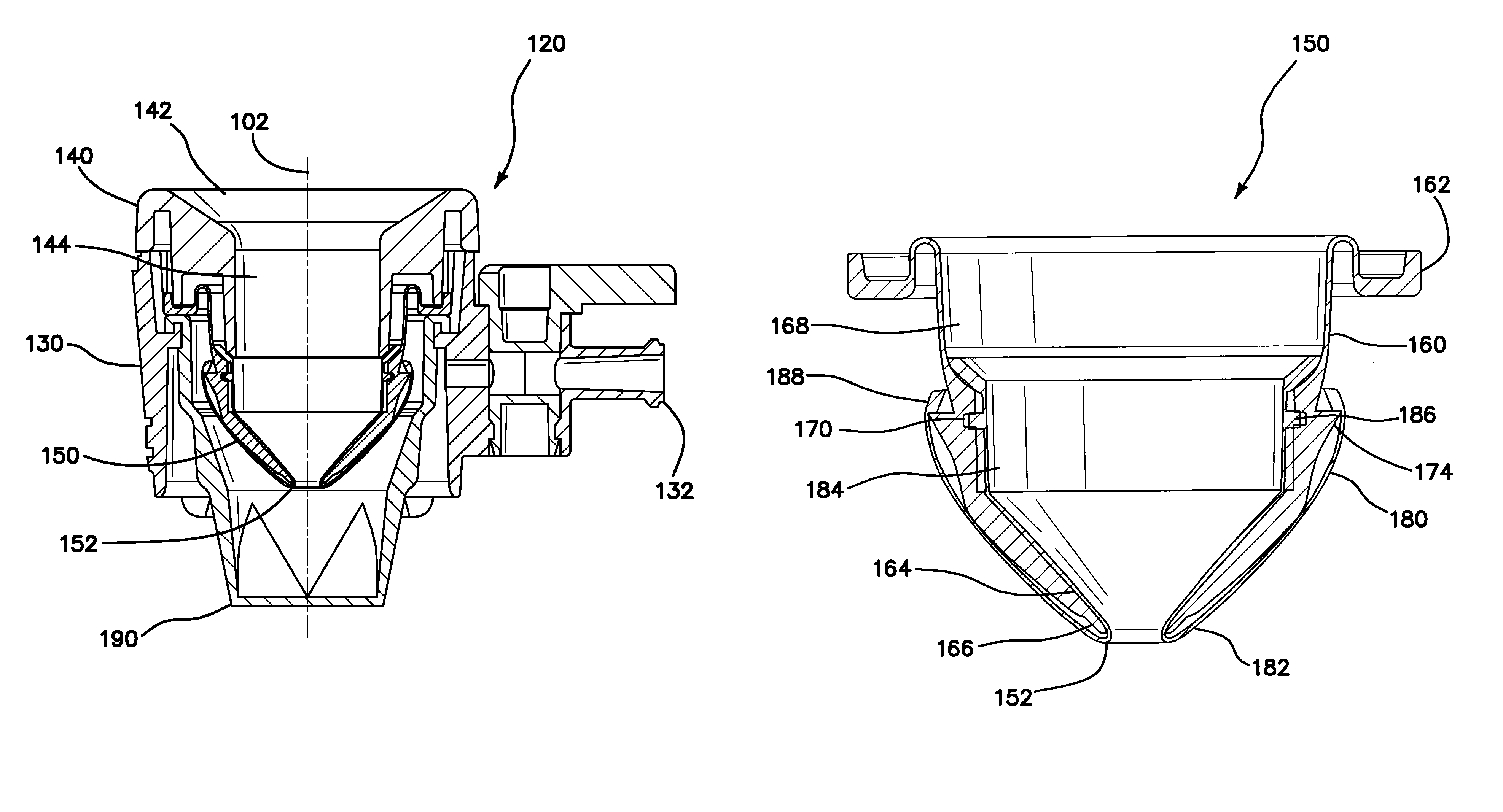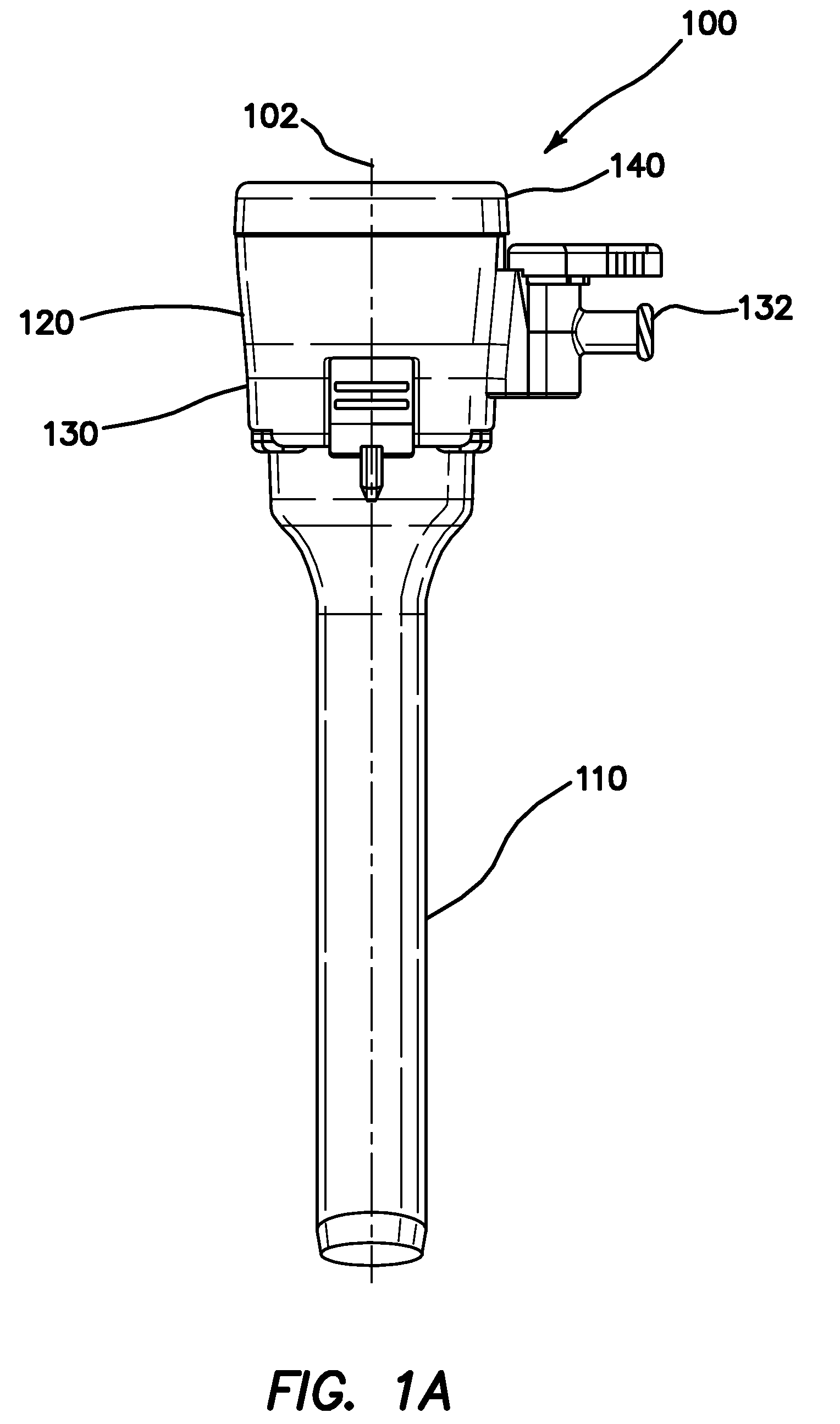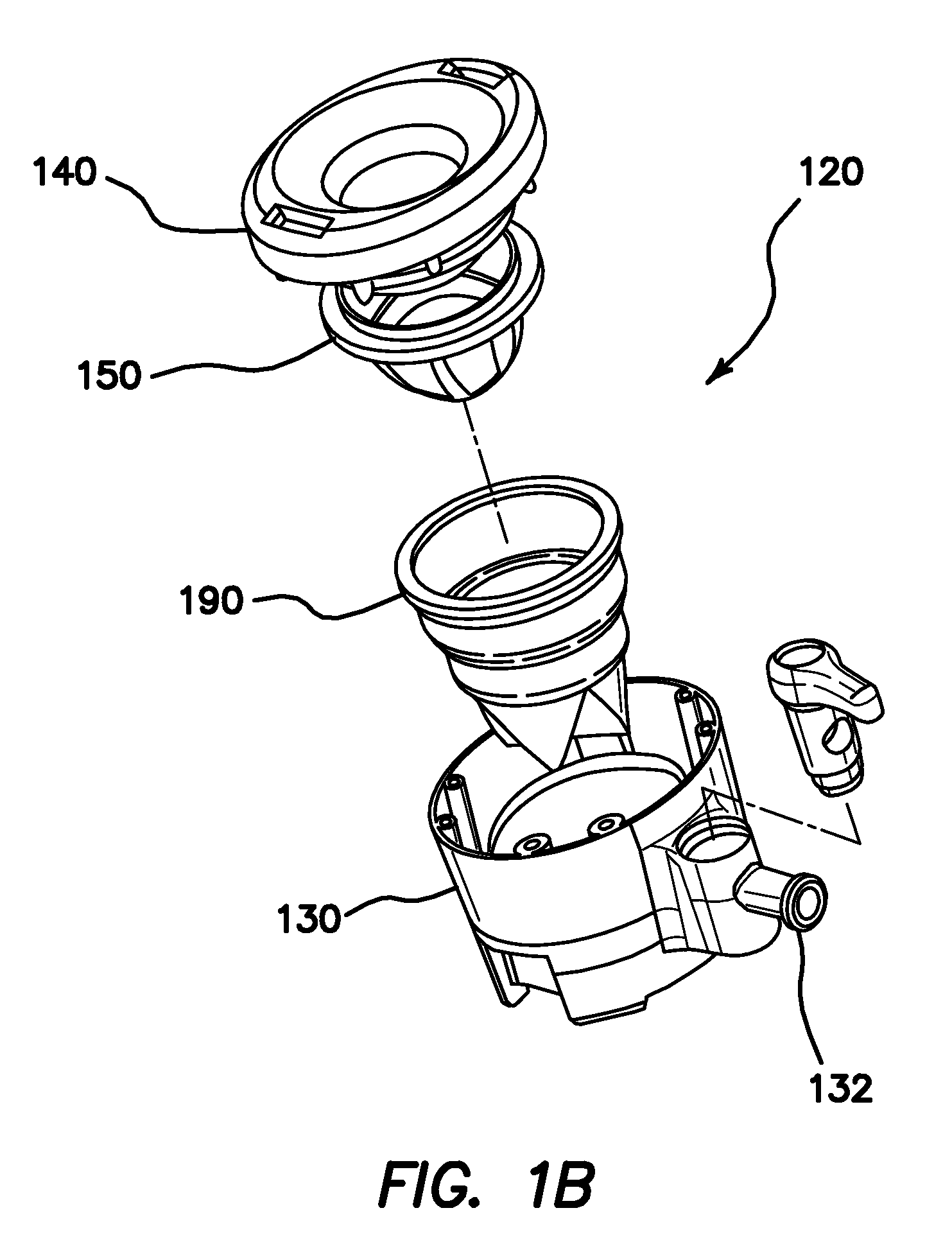Instrument seal
a technology for instruments and seals, applied in the field of medical devices, can solve the problems of increasing drag force, nicks or cuts to material around the orifice, and not protecting the orifice of the septum from damage,
- Summary
- Abstract
- Description
- Claims
- Application Information
AI Technical Summary
Benefits of technology
Problems solved by technology
Method used
Image
Examples
Embodiment Construction
[0036]A valve or seal for a surgical access device comprises an instrument contact element and a compression element. Separating the instrument contact and the instrument conforming functions of the seal into separate components permits improving each function independently of the other, for example, through material selection, dimensioning, changes in geometry, and the like. For example, one material may exhibit high puncture resistance and low friction, while a second material exhibits high elongation and low modulus. Embodiments of the seal are useful in surgical access devices such as trocars, hand ports, single ports, and the like.
[0037]FIG. 1A is a side view of a surgical access device 100, embodied as a trocar, comprising a proximal end, a distal end, and a longitudinal axis. A tubular cannula 110 comprising a longitudinal lumen is disposed at the distal end and is coupled to a seal assembly 120 at the proximal end. An instrument access channel 102 extends through the cannula...
PUM
 Login to View More
Login to View More Abstract
Description
Claims
Application Information
 Login to View More
Login to View More - R&D
- Intellectual Property
- Life Sciences
- Materials
- Tech Scout
- Unparalleled Data Quality
- Higher Quality Content
- 60% Fewer Hallucinations
Browse by: Latest US Patents, China's latest patents, Technical Efficacy Thesaurus, Application Domain, Technology Topic, Popular Technical Reports.
© 2025 PatSnap. All rights reserved.Legal|Privacy policy|Modern Slavery Act Transparency Statement|Sitemap|About US| Contact US: help@patsnap.com



